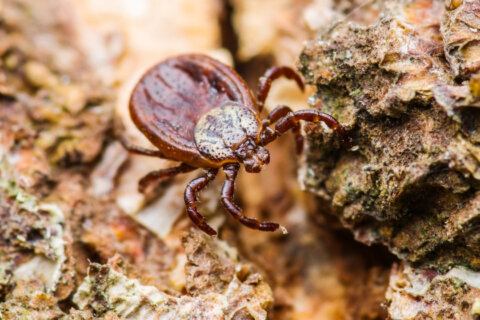If we gain a few pounds during the winter holidays, we often blame the extra cookies and great food we ate, as well as the lack of exercise during the cold and dark days of the season. However, could our weight gain be related to the hibernation signals that come from our brain?
When I moved to Cleveland, Ohio, I had a chance to observe deer in my backyard for the first time. I had only seen them at the zoo before. It was summer time. The animals were lean, beautiful, very active and eating all my plants. When the winter hit,and the snow accumulation reached my knee, I watched the same deer population struggle to walk in our backyard, which was now bare of any plants to eat. Their size had doubled compared to four months ago; they were fatter and slower. I was fascinated by this change and reflected on the cycle of nature that is part of life and survival.
As I started to learn more about the brain’s connection to diabetes and the cyclic changes in our metabolism that can also influence the development of diabetes, I started to take a closer look at what I observed in nature. How do animals survive long seasons of food scarcity? How is glucose supply to the brain maintained during that time?
When we think of hibernation, certain animals come to mind — but not always humans. We are also part of this natural cycle, and it affects our metabolism. Like other animals, the human body naturally changes to create an insulin-resistant state. This helps our system be more fuel efficient and go long periods of time with a smaller amount of food. This is a naturally occurring seasonal event in all vertebrates. This survival mechanism has been preserved for almost 400 million years of evolution and is essential to regulate metabolism.
During the seasonal change, which occurs around late summer/early fall, our brain tells our body to increase its insulin resistance. As a result, our liver can increase fat production, and our adipose and non-adipose tissues can store fat to get ready for winter. Ants get ready for winter by putting away their winter food; we get ready by storing fat in our body.
We now understand better that our central nervous system is in command and control of our peripheral fuel metabolism functions, such as liver glucose and lipid metabolism, adipose metabolism, muscle physiology, pancreatic insulin and glucagon secretion, as well as cardiovascular biology. The liver is also asked to increase glucose production to be able to send blood glucose to the brain, which needs it the most. Our brain also controls the peripheral tissues that can decrease glucose utilization and increase fat instead.
The command and control center is located deep in between our eyebrows, near the hypothalamus, and orders are transmitted via the neuroendocrine axis with different signaling pathways that switch our system to hibernation or vice versa. This low brain area, which controls the hypothalamic dopamine activity, is the key player for the insulin-resistance state in humans.
Interestingly, a low level of dopamine activity has also been found to be associated with obesity and Type 2 diabetes.
For some of us, this annual cycle of insulin resistance reverses back to an insulin-sensitive state around late winter/early spring to get ready for summer and an abundance of food.
For others, the circadian dopamine input to the brain, particularly the biological pacemaker called SCN, is lost. When that happens, we lose the key regulator of this annual cycle of peripheral glucose and lipid metabolism and remain in our “hibernation mode” summer and winter, all year round.
If you have diabetes and use insulin as your main therapy, you might have noticed these cyclical changes. For instance, have you ever noticed that your blood sugar levels suddenly are higher early fall? In early spring, have you possibly noticed that you start having more hypoglycemia despite using the same insulin amount, physical activity and food? This could be related to your metabolic cycle.
The scientific community continues to study metabolism to understand it better and develop ways to help diabetic patients reverse insulin resistance. More research is needed to further advance the field.
With the holiday season around the corner, I remind myself that my metabolism must have switched to its slow winter mode, so I need to watch what I eat and stay active. And, I remind my patients who have diabetes that the best remedy to overcome weight gain during the holidays, as well as improve and control blood sugar levels, is portion control and exercise.
More from U.S. News
10 Fun Kid Activities for Adult Bodies and Minds
Got Diabetes? Why You Must Protect Your Feet
10 Signs Your Thyroid is Out of Whack
Hibernation Mode Slows Metabolism During Fall and Winter Seasons originally appeared on usnews.com







